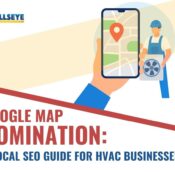
Fast, Beautiful, Profitable – Web Design That Works for Home Automation Businesses!
Fast, beautiful, and profitable web design is essential for home automation businesses. It enhances user experience, improves search rankings, and drives conversions. A professional, responsive website showcases smart tech services and builds trust with tech-savvy customers seeking innovative solutions.
Call Now For The Expert Digital Marketing Solutions: 561-277-0148
Home Tech Website Performance – The Secret to Fast, Beautiful, Profitable Web Design
Your website is your most effective marketing and sales tool in the modern digital world, and it serves as more than simply a virtual business card. A slow, antiquated, or awkward website can quickly drive away clients for home automation businesses, where creativity and technological know-how are needed. For this reason, the performance of a home tech website is essential to its success. A beautiful, conversion-focused website that loads quickly may increase sales, foster trust, and showcase the caliber of your smart home products.
How do you get there, though? Let’s examine the steps involved in developing a successful website designed especially for home automation companies.
Why Website Speed Matters in the Smart Home Industry
The Role of Speed Optimization for Smart Homes
Speed isn’t just a nice-to-have; it’s a must. Visitors expect websites to load within two seconds or less. When your site is slow, potential customers bounce, and Google penalizes your ranking. Speed Optimization for Smart Homes is vital for ensuring your audience engages with your content and doesn’t abandon ship.
Imagine you’re selling smart thermostats or home security systems. Your visitors are likely tech enthusiasts or homeowners seeking efficiency—if your website is slow, it contradicts the very promise of your product.
Tools and Techniques to Boost Home Tech Site Speed
There are multiple ways to Boost Home Tech Site Speed:
- Image Compression: Optimize images using tools like TinyPNG or WebP format.
- Minify Code: Reduce the size of CSS, HTML, and JavaScript files.
- Use a CDN: A content delivery network distributes your site across global servers for faster access.
- Lazy Loading: Load images and videos only when they’re in view.
Each improvement contributes to enhanced Home Tech Website Performance, ensuring a smoother user experience.
Choosing the Best Hosting for Home Tech Sites
Why Hosting Impacts Performance
Think of hosting as the engine under your website’s hood. No matter how sleek the design, if your hosting provider is slow or unreliable, your entire Home Tech Website Performance suffers.
Shared hosting might save money upfront, but it often results in slower speeds and downtime. For smart home businesses, this could mean lost leads and revenue.
Hosting Features to Look for in the Home Automation Industry
When selecting the Best Hosting for Home Tech Sites, consider the following:
- SSD Storage: Faster read/write speeds compared to traditional HDDs.
- Dedicated Resources: VPS or dedicated servers offer more power.
- CDN Integration: Faster content delivery across regions.
- Staging Environments: For testing changes without disrupting live content.
- Automatic Backups & SSL Certificates: Essential for security and compliance.
Investing in reliable hosting is an essential step toward stellar Home Tech Website Performance.
Mobile Optimization for Home Automation – Don’t Ignore Your On-the-Go Users
Responsive Design and Beyond
Over 60% of internet traffic comes from mobile devices. If your site isn’t mobile-optimized, you’re alienating a huge chunk of potential customers. Mobile Optimization for Home Automation ensures your site looks and functions well on smartphones and tablets.
A mobile-optimized site features:
- Touch-friendly buttons
- Readable text without zooming
- Simple navigation
- Fast load times
All these elements are essential for an exceptional Home Automation Site UI/UX.
How Mobile Affects SEO and Conversion Rates
Google uses mobile-first indexing, meaning it ranks your site based on its mobile version. A mobile-friendly design improves:
- SEO rankings
- Dwell time
- Conversion rates
Combining Mobile Optimization for Home Automation with SEO-Friendly Smart Home Pages ensures your site not only attracts visitors but also keeps them engaged.
Conversion-Focused Home Automation Design – Turning Clicks into Clients
Visual Hierarchy and User Intent
Your website should guide users effortlessly from interest to action. Conversion-Focused Home Automation Design uses visual hierarchy—size, color, spacing, and typography—to direct attention.
For instance:
- Highlight “Schedule a Demo” buttons in a bold, contrasting color.
- Place testimonials and case studies near CTAs.
- Use directional cues like arrows or images pointing toward forms.
Smart Home E-commerce Sites That Sell
Running an e-commerce site? Smart home buyers are discerning. Your Smart Home E-commerce Sites should offer:
- Detailed product descriptions
- HD images and videos
- Filters for product type, price, and brand
- Seamless checkout with multiple payment options
These enhancements contribute to better Home Tech Website Performance and higher conversion rates.
Creating SEO-Friendly Smart Home Pages for Long-Term Traffic
On-Page SEO for Smart Home Businesses
Effective SEO ensures your site appears in search results when prospects look for smart home solutions. Key on-page elements include:
- Keyword-rich headings
- Meta descriptions
- Alt text for images
- Internal and external links
- Schema markup for reviews, FAQs, and products
Use the primary keyword Home Tech Website Performance naturally in your content to improve visibility.
Content That Converts and Ranks
High-ranking content doesn’t just attract visitors—it converts them. Focus on:
- Blog posts: How-tos, guides, and product comparisons
- Landing pages: Optimized for specific services or products
- Case studies: Real-world results
When your pages are both SEO-optimized and user-friendly, you enhance both visibility and performance.
Smart Home Business Website Design Trends for 2025 and Beyond
Minimalist Interfaces with High Functionality
Less is more. A minimalist design with ample white space, clean typography, and intuitive navigation makes your site easier to use and more appealing.
Trends include:
- Micro-interactions (like hover effects)
- Animated icons
- Split-screen layouts
All of these contribute to a more engaging Home Automation Site UI/UX.
Integrating AI, Voice, and Automation in Web Design
The future of Smart Home Business Website Design lies in smart integration:
- AI Chatbots: For instant support
- Voice Search: Optimized content for “Hey Google” or “Alexa”
- Automation: CRM integration, auto-responses, booking flows
These elements enhance user experience while improving Home Tech Website Performance.
Boosting Trust and Credibility Through Design
Testimonials, Security, and Certifications
Trust is key in home automation. People are letting your products into their homes, after all. Build credibility with:
- Customer testimonials and video reviews
- SSL certificates and trust badges
- Industry certifications and awards
These trust signals directly affect conversion rates and long-term loyalty.
Local SEO and Geo-Targeting for Smart Home Businesses
Optimize your site for local search with:
- Google Business Profile listings
- Location-specific landing pages
- Local keywords (e.g., “Smart Home Installation in Austin”)
This enhances your visibility for nearby customers searching for home automation solutions.
How to Evaluate and Improve Your Existing Home Automation Website
Performance Audits and A/B Testing
Start with a performance audit. Use tools like Google Lighthouse to evaluate:
- Load times
- Accessibility
- SEO
- Best practices
A/B testing allows you to test two versions of a page to see which performs better. Test:
- CTA button colors and placements
- Headlines and subheads
- Product page layouts
These steps ensure continuous improvement in Home Tech Website Performance.
Upgrading for Scalability and Future-Proofing
Your website should grow with your business. Future-proof it by:
- Using scalable hosting
- Modular design that supports easy content updates
- CMS platforms like WordPress or Webflow
These practices align with Conversion-Focused Home Automation Design and prepare you for long-term success.
Building with Purpose – Aligning Web Design with Business Goals
Design That Supports Sales and Service Integration
Your website should do more than inform—it should sell and serve. Integrate:
- CRM systems like HubSpot or Salesforce
- Appointment booking tools
- Live chat or chatbot features
These features streamline your sales funnel and improve customer satisfaction.
Profitable Smart Home Websites
Take inspiration from top players:
- Control4: Clean design, intuitive navigation, strong branding
- Vivint: Powerful testimonials and video integrations
- Ecobee: E-commerce functionality meets minimalist design
What do they all have in common? High Home Tech Website Performance, excellent UX, and a focus on conversions.
Conclusion: Fast, Beautiful, and Profitable – The Winning Formula for Your Home Tech Site
A fast, visually appealing, and strategically designed website is no longer optional for home automation businesses—it’s a must. By focusing on Home Tech Website Performance, mobile optimization, SEO, and conversion-driven design, you position your brand as a trusted leader in the smart home space. The right web design not only attracts visitors but also turns them into loyal customers. Invest in performance, polish, and purpose to create a digital presence that truly works for your business. With the right tools and strategy, your website can become your most powerful marketing asset.
FAQs
What is the ideal speed for Smart Home E-commerce Sites?
Ideally, your e-commerce site should load within 2 seconds. Fast sites provide better user experiences and improve conversion rates.
How does mobile optimization impact Home Tech Website Performance?
Mobile optimization ensures your site performs well on smartphones and tablets, enhancing SEO and user experience, which boosts overall performance.
What features define the Best Hosting for Home Tech Sites?
Key features include SSD storage, CDN support, high uptime, and dedicated resources for faster speeds and reliability.
How do I make my Home Automation Site UI/UX better?
Focus on clean design, intuitive navigation, mobile responsiveness, and user-friendly CTAs to improve UI/UX.
What makes a website Conversion-Focused for Home Automation businesses?
A conversion-focused site guides users toward actions like booking a demo or making a purchase through compelling CTAs, optimized content, and trust signals.




